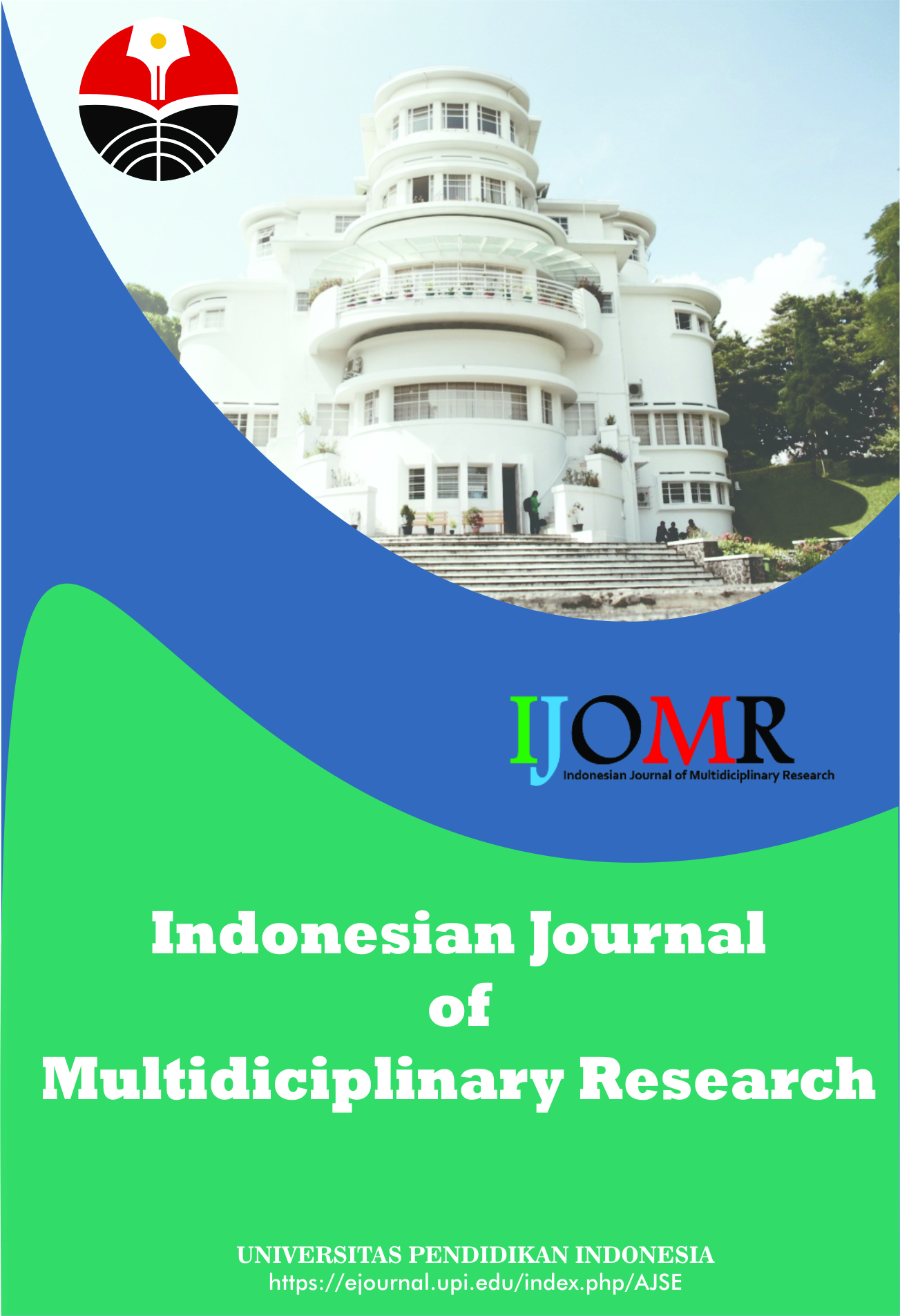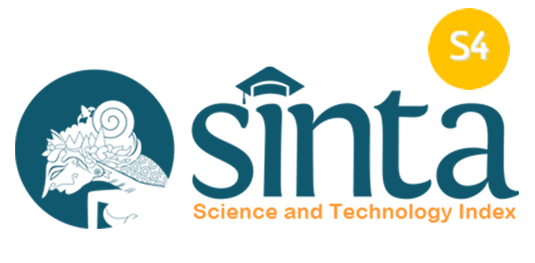Information and Communication Technology as Predictor for Quality Instructional Delivery Approach among Pre-Service Teachers
Abstract
Keywords
Full Text:
PDFReferences
Agbulu, O. N. and Ademu, A. (2010). Assessment of agricultural science teachers’ knowledge and utilization of information and communication technology in Nigerian secondary schools. Journal of Emerging Trends in Educational Research and Policy Studies, 1(1), 1-9.
Akinoso, S. O. (2023). Motivation and ICT in secondary school mathematics using unified theory of acceptance and use of technology model. Indonesian Journal of Educational Research and Technology, 3(1), 79-90.
Arciosa, R. M. (2022). Information communication technology (ICT)-based instructional software and its effectiveness in teaching high school geometry. Indonesian Journal of Teaching in Science, 2(1), 51-60.
Bolaji, H. O. and Adeoye, M. A. (2022). Accessibility, usability, and readiness towards ICT tools for monitoring educational practice in secondary schools. Indonesian Journal of Multidiciplinary Research, 2(2), 257-264.
Bolaji, H. O., Jimoh, H. A. (2023). Usability and utilization of ICT among educational administrators in secondary students in public school. Indonesian Journal of Educational Research and Technology, 3(2), 97-104.
Dong, L. (2021). New prospect of digital education in the post-epidemic era: Challenges actions and reflections. Journal of Distance Education, 39(2021), 16-27.
Dwiana, O., Muktiarni, M., and Mupita, J. (2022). Improved information literacy of elementary school students about living pharmacies through information and communication media (ICT). ASEAN Journal of Science and Engineering Education, 2(3), 193-198.
Felder, R. M., and Brent, R. (2004). The intellectual development of science and engineering students. Part 1: Models and challenges. Journal of Engineering Education, 93(4), 269-277.
Finger, G., and Trinidad, S. (2002). ICTs for learning: An overview of systemic initiatives in the Australian states and territories. Australian Educational Computing, 17(2), 3-14.
Geng, S., Law, K. M., and Niu, B. (2019). Investigating self-directed learning and technology readiness in blending learning environment. International Journal of Educational Technology in Higher Education, 16(1), 1-22.
Ghavifekr, S., and Rosdy, W. A. W. (2015). Teaching and learning with technology: Effectiveness of ICT integration in schools. International Journal of Research In Education And Science, 1(2), 175-191.
Ghavifekr, S., Razak, A. Z. A., Ghani, M. F. A., Ran, N. Y., Meixi, Y., and Tengyue, Z. (2014). ICT integration in education: Incorporation for teaching and learning improvement. Malaysian Online Journal of Educational Technology, 2(2), 24-45.
González G. E., and Dejuan V. M. D. (2021). Encouraging undergraduate marketing students to reflect on critical thinking and the digital gender divide. European Journal of Investigation in Health, Psychology and Education, 11(3), 933-952.
Hermans, R., Tondeur, J., Van Braak, J., and Valcke, M. (2008). The impact of primary school teachers’ educational beliefs on the classroom use of computers. Computers and Education, 51(4), 1499-1509.
Ijaduola, K. O. (2010). Management fear motivational strategy as a correlate of task performance among Nigerian secondary school teachers FCT education secretariat. Journal of Curriculum Studies and Instructions, 3(1), 193-201.
Ishar, M. I. M., Derahman, W. M. F. W., and Kamin, Y. (2020). Practices and planning of ministries and institutions of technical and vocational educational training (TVET) in facing the industrial revolution 4.0 (ir4. 0). Malaysian Journal of Social Sciences and Humanities (MJSSH), 5(3), 47-50.
Jadhav, P., Gaikwad, H., Patil, K. S. (2022). Teaching and learning with technology: Effectiveness of ICT integration in schools. ASEAN Journal of Science Education, 1(1), 33-40.
Jamieson P. R., Albion, P., Finger, G., Cavanagh, R., Fitzgerald, R., Bond, T., and Grimbeek, P. (2013). Development of the TTF TPACK survey instrument. Australian Educational Computing, 27(3), 26-35.
Li, B. (2022). Ready for online? Exploring EFL teachers’ ICT acceptance and ICT literacy during covid-19 in mainland China. Journal of Educational Computing Research, 60(1), 196-219.
Oviawe, J. I., and Oshio, L. E. (2011). Impact of information and communication technology on teaching and learning ability of education students in Universities in Edo State, Nigeria. International Review of Social Sciences and Humanities, 2(1), 126-133.
Ranjan, R. (2013). A study of practice teaching program: A transitional phase for student teachers. Voice of Research, 1(4), 24-28.
Shu, C. C. H. E. N., Yeur-Hur, L. A. I., and Shiow-Luan, T. S. A. Y. (2020). Nursing perspectives on the impacts of covid-19. Journal of Nursing Research, 28(3), 1-5.
Singh, L., and Jabeen, K. (2018). ICT for delivering quality teaching-learning process. International Journal of Movement Education and Social Science, 7(Special issue), 342-349.
Türel, Y. K., and Johnson, T. E. (2012). Teachers' belief and use of interactive whiteboards for teaching and learning. Educational Technology and Society, 15(1), 381–394.
Umoren, G. (2006). Information and communication technology and curriculum. Nigerian Journal of Curriculum Studies, 2(1), 57-83.
Yusuf, M. O. (2007). Trends and barriers on the integration of communication in the Nigerian school system. Journal of Information Systems, 17(2), 133-146.
Yusuf, M. O. 2011). Student teachers’ competence and attitudes towards information and communication technology: A case study in a Nigerian university. Contemporary Educational Technology, 2(1), 18-36.
Ziden, A. A., Ismail, I., Spain, R. and Kumutha, K. (2011). The effect of ICT use in teaching and learning on students’ achievement in science subjects in a primary school in Malaysia. Malaysian Journal of Distance Education, 13(2), 19-32.
DOI: https://doi.org/10.17509/ijomr.v3i1.50957
Refbacks
- There are currently no refbacks.
Copyright (c) 2022 Kantor Jurnal dan Publikasi, Universitas Pendidikan Indonesia (UPI)

This work is licensed under a Creative Commons Attribution-ShareAlike 4.0 International License.
Indonesian Journal of Multidiciplinary Research (IJOMR) is published by Universitas Pendidikan Indonesia (UPI)















